Introduction : The blue city, morocco
Imagine stepping into a town where every street, every doorway, and every stairway is bathed in shades of blue. The air is crisp with mountain freshness, and the hum of local life blends seamlessly with the rhythmic calls to prayer echoing from the minarets. Welcome to Chefchaouen, Morocco’s famed Blue City, and one of the best cities in morocco, a place where history, culture, and nature converge to create an unforgettable travel experience.
Whether you’re a history buff, a photography enthusiast, or a traveler seeking tranquility, Chefchaouen offers a mesmerizing escape. This guide will take you through the city’s fascinating past, must-visit attractions, local cuisine, and essential travel tips to make your visit seamless and memorable.
Table of Contents
Why is Chefchaouen Called the Blue City of Morocco?
You might be wondering, why blue? Theories surrounding Chefchaouen’s distinctive hue vary, but three popular explanations stand out:
- Spiritual Significance: The Jewish community that once lived here believed that blue symbolized the divine and painted their homes as a reminder of heaven.
- Climate Benefits: The blue tones reflect sunlight, helping keep buildings cool during Morocco’s scorching summers.
- Tourism and Aesthetics: Over time, the blue walls became an iconic attraction, drawing visitors from around the world and boosting local tourism.
Whatever the reason, wandering through Chefchaouen’s labyrinth of blue alleys feels like walking inside a dream.
A Brief History of Chefchaouen
The Founding of Chefchaouen
Chefchaouen was established in 1471 by Moulay Ali Ben Moussa Ben Rached El Alami as a small fortress to protect against Portuguese invasions. Nestled in the Rif Mountains, the city remained a strategic stronghold for centuries.
Jewish and Andalusian Influence
During the late 15th and early 16th centuries, Muslim and Jewish refugees fleeing the Spanish Inquisition sought refuge here. Their influence shaped the city’s architecture, culture, and distinct blue-painted homes.
Colonial Era and Modern Development
Under Spanish rule from 1920 to 1956, Chefchaouen remained somewhat isolated, preserving its unique charm. Today, it stands as one of Morocco’s most beautiful and serene destinations.
Top Things to Do in Chefchaouen
Explore the Blue Medina
- Stroll through the cobblestone alleys, where every corner offers a perfect Instagram-worthy shot.
- Visit Plaza Uta el-Hammam, the heart of the medina, surrounded by cafes and local shops.
- Discover the Kasbah Museum, a 15th-century fortress featuring exhibits on the city’s history and culture.
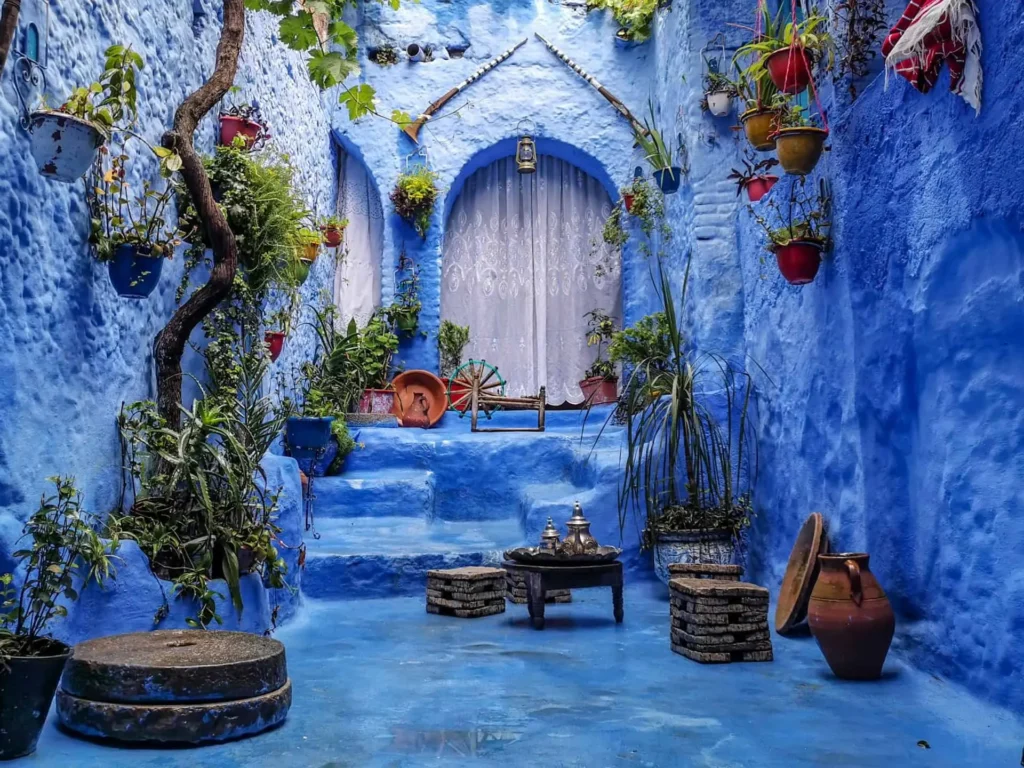
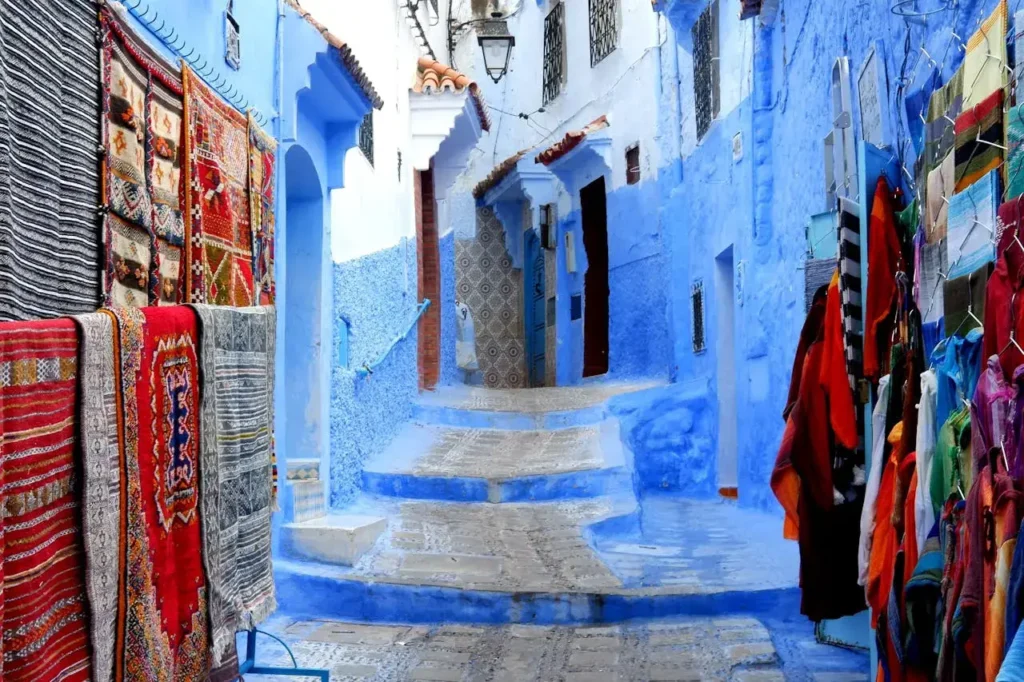
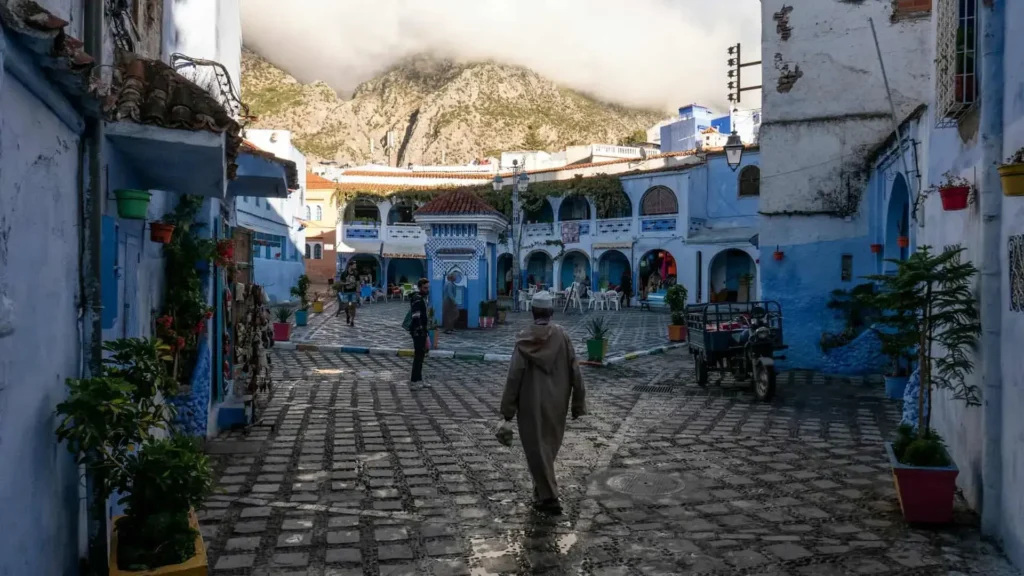
Take a scenic walk up to the Spanish Mosque for breathtaking city views.
- A 30-minute uphill walk rewards you with breathtaking views of the entire blue city.
- The best time to visit is at sunset when the city is bathed in warm, golden light
Visit Ras El Maa Waterfall
- A peaceful spot where locals gather to wash clothes and relax by the flowing water.
- A great spot to unwind and refresh after a day of exploring.
Try Local Cuisine
- Savor Bissara, a traditional Moroccan fava bean soup.
- Indulge in goat cheese, a specialty of the region.
- Enjoy Savor a flavorful lamb tagine slow-cooked with aromatic local spices.
- Recommended eateries: Bab Ssour, Café Clock, Casa Hassan.
Shop for Unique Handicrafts
- Chefchaouen is famous for handwoven blankets, colorful pottery, and artisanal leather goods.
- Visit local shops for authentic, locally made souvenirs.
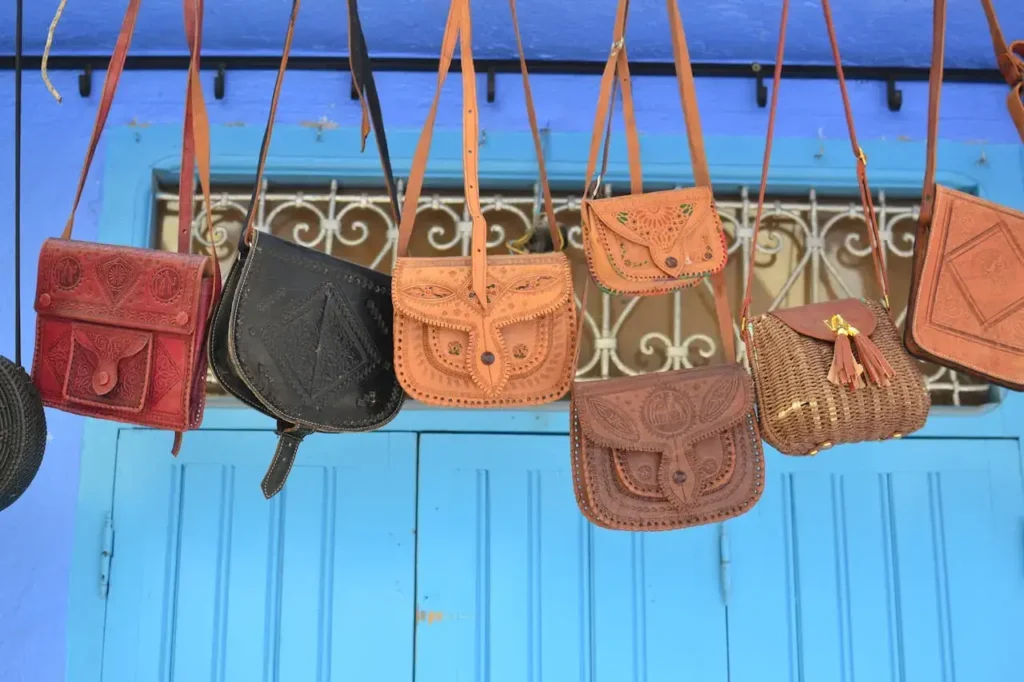
Take a Day Trip to Akchour Waterfalls
- Located about 45 minutes away, Akchour is a paradise for hikers and nature lovers.
- Swim in natural pools and marvel at the Bridge of God, a stunning rock formation.
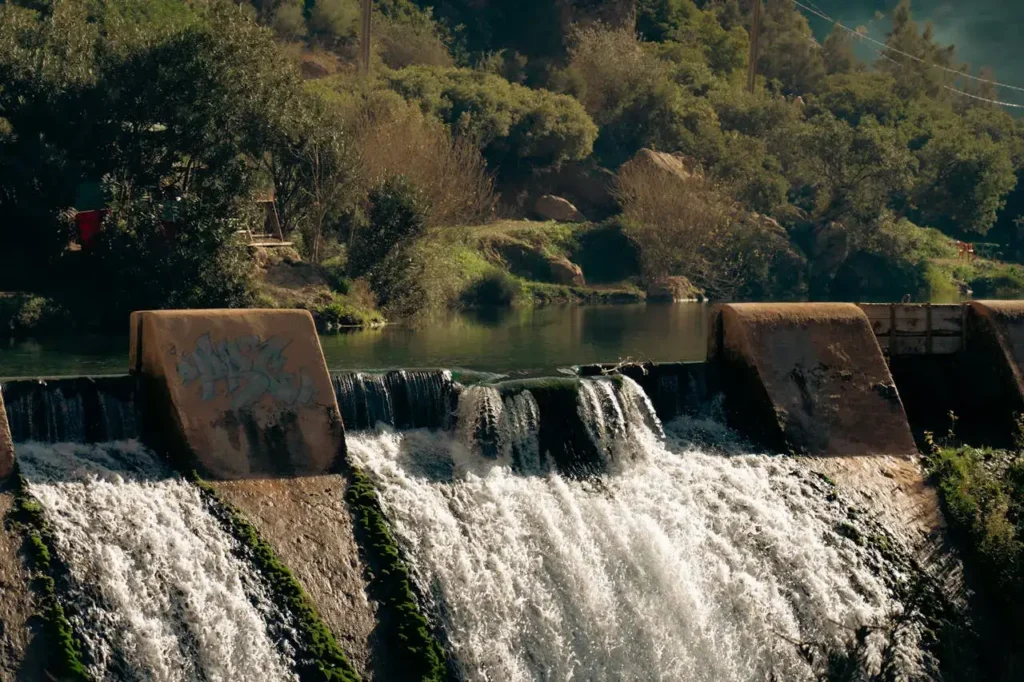
Best Time to Visit Chefchaouen
Each season offers a different experience:
- Spring (March–May): Mild weather, perfect for photography.
- Fall (September–November): Fewer tourists, comfortable temperatures.
- Summer (June–August): Lively with local festivals but can be hot.
- Winter (December–February): Quiet and peaceful, with chilly evenings.
How to Get to Chefchaouen
From Tangier
- Grand Taxi: 2.5 to 3 hours.
- CTM Bus: 4 hours, budget-friendly option.
From Fez
- Bus: 4-5 hours.
- Private Transfer: More convenient but expensive.
From Casablanca or Marrakech
- Best combined with other destinations, as travel time exceeds 6 hours.
Where to Stay in Chefchaouen
Luxury Accommodations
- Dar Echchaouen – Stunning riad with mountain views.
- Lina Ryad & Spa – High-end boutique stay with spa services.
Mid-Range Hotels
- Riad Assilah – Charming traditional guesthouse.
- Hotel Parador – Modern amenities in a prime location.
Budget-Friendly Stays
- Hostel Aline – Great for backpackers.
- Casa Perleta – Affordable riad with cozy decor.
Essential Travel Tips for Visiting Chefchaouen
- Respect local customs : Modest dress is appreciated.
- Bargaining is expected in souks : don’t accept the first price.
- Cash is preferred : ATMs are available but limited.
- Drink plenty of water, as the mountain air can be quite dry.
- Be respectful when taking photos : always ask for permission before capturing images of locals.
Conclusion:
Chefchaouen is more than just a travel destination ; it’s an experience that lingers in your memory long after you leave. The town’s mystical blue streets, rich history, and welcoming locals create an atmosphere unlike any other. Whether you’re wandering through the medina, tasting local delicacies, or hiking in the surrounding mountains, every moment in Chefchaouen feels magical.
FAQs About the Blue City Morocco – Chefchaouen
Why is Chefchaouen blue?
- Theories include Jewish tradition, heat reduction, and aesthetic appeal.
Is Chefchaouen worth visiting?
- Absolutely! Its charm, history, and beauty make it one of Morocco’s top destinations.
How many days should I spend in Chefchaouen?
- 1-2 days for sightseeing, 3-4 days if you plan to explore nearby nature spots.
Is Chefchaouen safe for solo travelers?
- Yes, it is one of Morocco’s safest cities, known for its friendly locals.
What should I pack for Chefchaouen?
- Comfortable walking shoes, light clothing, a jacket for evenings, and a camera!
